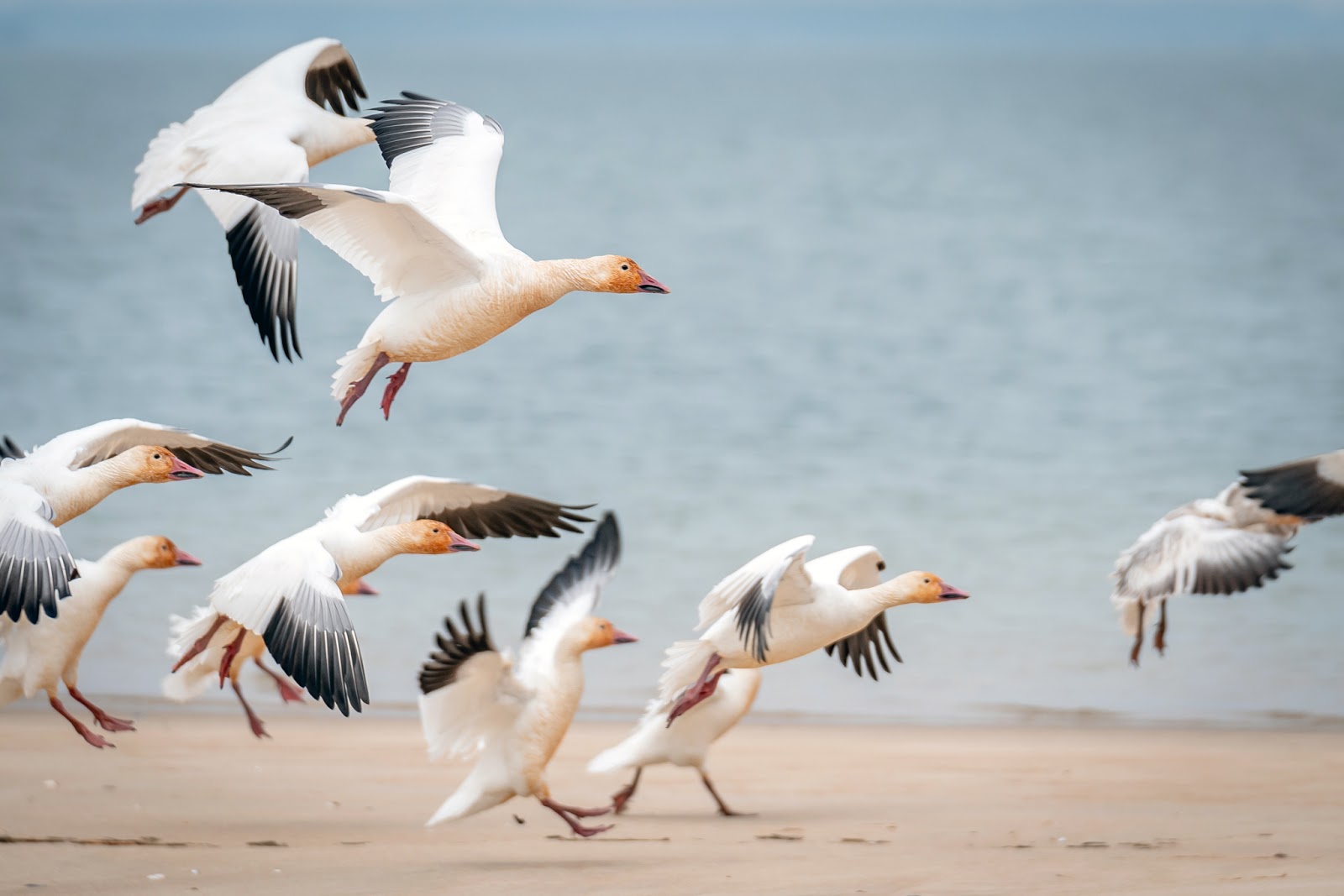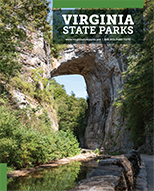Read Our Blogs
Virginia birds in The 12 Days of Christmas
Have you ever noticed how half of the gifts in “The Twelve Days of Christmas" song refer to birds? This birder has! Just for fun, I came up with a list of native birds to give it a Virginia twist. Give yourself the gift of winter birding by finding them at Virginia State Parks!
🎶 "A Virginia partridge on a dead tree." 🎶

Northern bobwhite for the "partridge." Why? Sometimes called Virginia quail or partridge, this seems fitting. However, they're not often in trees. They actually prefer brushy meadows, overgrown fields, hedgerows, or open woods adjacent to native grasslands or agricultural fields. Due to habitat loss and fire suppression, their population has greatly declined. We are proud of habitat restoration at places like Powhatan State Park that provide a perfect home for them. Northern bobwhites are more often heard than seen, since they tend to stay within dense, low cover where their plumage gives them excellent camouflage. They have been reported at the following parks:
- Powhatan State Park
- Machicomoco State Park (check out their new Songbird Trail)
- James River State Park
- Chippokes State Park
- Sweet Run State Park
- False Cape State Park
🎶 "Tons of turtle doves." 🎶

Mourning doves for the "turtle doves." Why? It has been called a Carolina turtle dove. This is a widespread bird which you’ve likely heard even in your neighborhood. Their mournful sounding call gave them their nickname. They like to gather in large numbers in winter, like pictured here at Mason Neck State Park. You can find them perching on branches, fences or telephone wires. I love looking at mourning doves in the sunlight, as their seemingly brown feathers sparkle pink and blue hues.
🎶 "This Marsh hen." 🎶

Clapper rail for the "French hen." Why? This bird is nicknamed “marsh hen” by hunters due to its chicken-like qualities and saltmarsh habitat. It’s much rarer to catch sight of these large, chestnut-and-gray rails, as these shy birds emerge only briefly onto mudflats and quickly vanish again into the dense marsh grasses. King rails can be very similar but are typically more brightly colored and favor freshwater marshes. Given their saltwater marsh habitat, they likely live in our coastal parks or parks in the Chesapeake Bay that have brackish water, listed below.
- Kiptopeke State Park
- First Landing State Park
- False Cape State Park
- York River State Park
- Machicomoco State Park
🎶 “Fluffy calling bird.” 🎶

White-throated sparrow for the "calling bird." Why? This line refers to songbirds and this sparrow has a beautiful song that can be heard in Virginia during the winter. They are only here in the winter, migrating from Canada. Their call is beautiful, a favorite in my backyard. It has been commonly translated to “Oh sweet Canada, Canada, Canada”. But maybe when there visiting in the winter it's "Oh sweet Caledon, Caledon, Caledon" (pictured at Caledon State Park below). Personally, I think their call sounds similar to the whistle from the movie Hunger Games. Once you identify their song you will notice them regularly. Find these sparrows at most of our parks during the winter, along edges of the woods, in fields or at feeders.
🎶 “Snow geese a-flying." 🎶

Snow geese for the "six geese." Why? Thousands of snow geese migrate to eastern Virginia and eastern North Carolina every winter. However, I changed "a-laying" to "a-flying" because you won’t see them laying any eggs here, as their principal nesting areas are on Greenland and surrounding northern islands. Snow geese are most often seen in the fields of southern Virginia Beach, like at False Cape State Park. When birding for snow geese, keep your eyes in the sky as you could see a large flock flying over the Back Bay. If you notice the black tips on their wings, you know it’s snow geese, which is how you can distinguish them from the next bird featured.
🎶 "Tundra swans a-swimming." 🎶

Tundra swans for the "swans a-swimming." Why? These swans are known for their striking white plumage and long, graceful necks. Tundra swan are often confused with non-native mute swans, but can be distinguished by their whistling noise and black-tipped bill. Each year, these birds undertake a remarkable migration from their breeding grounds in the Arctic tundra to warmer winter habitats, like Virginia. Each winter, rangers at Mason Neck State Park offer guided hikes along Woodmarsh Trail (within the neighboring Elizabeth Hartwell Mason Neck National Wildlife Refuge) where an observation deck looks out to tundra swan habitat. Tundra swan can be seen at the following parks:
Now you have a few birds to look out for this winter at Virginia State Parks. Consider joining in the Audubon Christmas Bird Count that happens every December 14 to January 5. Several parks are holding programs for the count. Find those count programs or other ranger-led birding experiences on our programs and events page.
Happy birding!
If you have read the article and have a question, please email nancy.heltman@dcr.virginia.gov.














